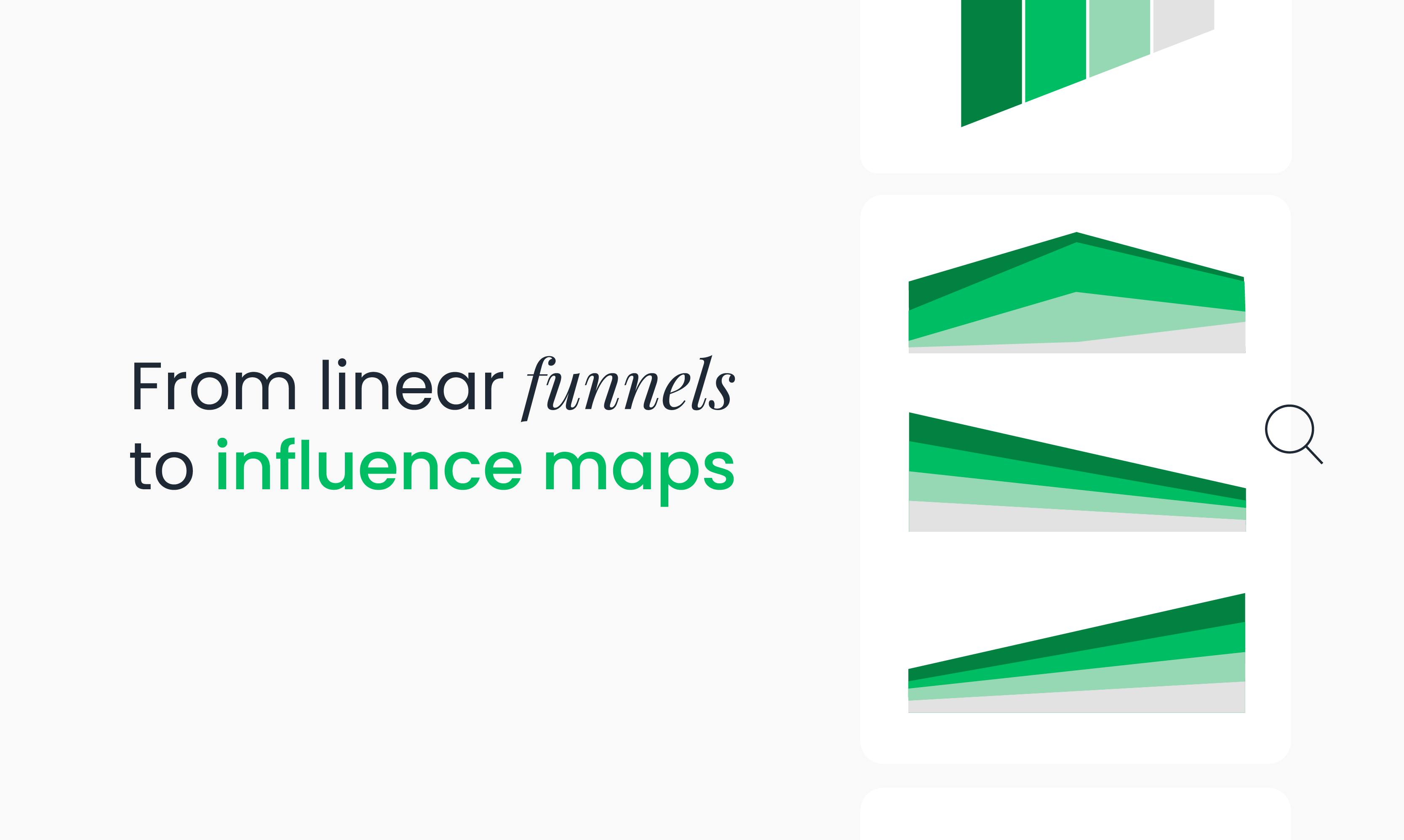



For a long time, marketers imagined the customer journey as a predictable path: first discovery, then consideration, and finally, purchase. This linear model helped simplify processes and structure strategies, but today it falls short. The reality is that consumer behavior is much more complex, multidimensional, and, above all, conversational.
The way people consume content, research, and purchase is shaped by digital hyperconnectivity and an overabundance of options. The journey is no longer a straight funnel, but a network of simultaneous interactions where consumers jump from one point to another in seconds. Given this scenario, BCG and Google propose a new framework: the 4S Framework and Influence Maps, more realistic and practical approaches to understanding how people make purchasing decisions today.
IN THIS ARTICLE
Consumers' online lives can be summarized in four main actions that, combined, explain most digital interactions:
These four dimensions reflect that consumers don't follow a predetermined path. They can go from scrolling to shopping in an instant, or be streaming and suddenly start searching prompted by a video ad. The key is understanding that these behaviors don't occur in isolation, but in a continuous flow, which requires brands to be present in every micro-moment.
As marketing teams, we're accustomed to measuring the success of our campaigns by the number of people reached. But the reality is that reaching doesn't mean influencing. Influence maps help overcome this limitation. Through them, brands can visualize how much they influence purchasing decisions at each touchpoint. It's no longer just how many users saw an ad that matters, but whether that impact was enough to move the needle toward action.
The main advantage of influence maps is that they allow brands to visualize a brand's ability to influence purchasing decisions and adapt their strategies to each individual journey.
Unlike traditional funnels, influence maps are dynamic and multidimensional. This means they recognize the diversity of journeys: that of a consumer who researches for weeks before purchasing, that of someone who buys impulsively after scrolling through social media, or that of those who compare prices on multiple marketplaces before making a decision. These maps highlight the level of influence that brands can exert at various touchpoints, both online and offline.
In practice, an influence map shows a brand, for example, that its greatest persuasive power occurs during the scrolling stage on Instagram, but that it loses strength at the moment of purchase in the e-commerce cart. With this information, it can redirect investments and adjust messages to balance the journey.

Recognizing the complexity of the customer journey isn't enough: tools capable of processing millions of signals in real time are needed. This is where artificial intelligence comes in, because through it, marketers can accurately identify the four types of behavior and execute creative and media campaigns based on them.
In addition, AI facilitates the construction of intelligent influence maps, which are updated in real time as consumer habits change. Adopting AI reduces the complexity of identifying the best ways to target marketing investments to achieve the greatest possible impact.
Interpreting the different consumer behaviors at each point in the journey directly impacts how we measure what works and what doesn't.
As we know, multi-touch attribution (MTA) distributes credit among all the touchpoints the customer touches before converting. But without understanding what type of 4S behavior they were engaging in, we can be misallocating credit. For example, a user could be streaming, then scrolling through social media and end up searching before purchasing. Context-free 4S attribution doesn't distinguish which action had the greatest impact.
Incrementality measures the real effect of a campaign by measuring results comparing exposed vs. control groups. The 4S framework allows you to design more precise experiments, for example, measuring how incremental your investment is when you reach users in a scrolling vs. searching state. This is how we discover which behavior best triggers incremental buying, and we don't just measure share of voice.
Pro tip! Experiment with incrementality by 4S. Set up behavioral A/B tests: what happens if we show ads to those streaming? What is the incremental gain compared to a control group? What if we repeat the same for scrolling, searching, and shopping?
MMM analyzes the historical impact of each marketing variable on results. But if media inputs aren't aligned with 4S behaviors, it can lose precision. A behaviorally segmented MMM—for example, actions that drive shopping vs. streaming—allows you to better measure the response caused by each type of interaction and refine budget allocation.
Pro tip! Integrate the 4S with a segmented MMM. Include variables that distinguish spending or impact by behavior. This improves the model's validity and helps you see which 4S phase your investment yields the best results.

The 4S model is a lever for better measuring and optimizing media investment. By applying MTA, incrementality testing, and MMM with a 4S approach, your strategies gain precision, relevance, and efficiency.
The customer journey can no longer be understood as a rigid funnel. Today, it's more like a living, constantly moving map, where consumers jump between streaming, scrolling, searching, and shopping without a predictable order.
Brands that manage to integrate the 4S framework, leverage influence maps, and leverage artificial intelligence will be better prepared to connect with their audiences. It's not just about being present, but also about influencing at the right moments and with the right message.
The big question is: is your marketing strategy designed for a linear path... or to confidently navigate the complexity of the digital age?

Federico Kalos
CMO @ Bunker DB
1/9